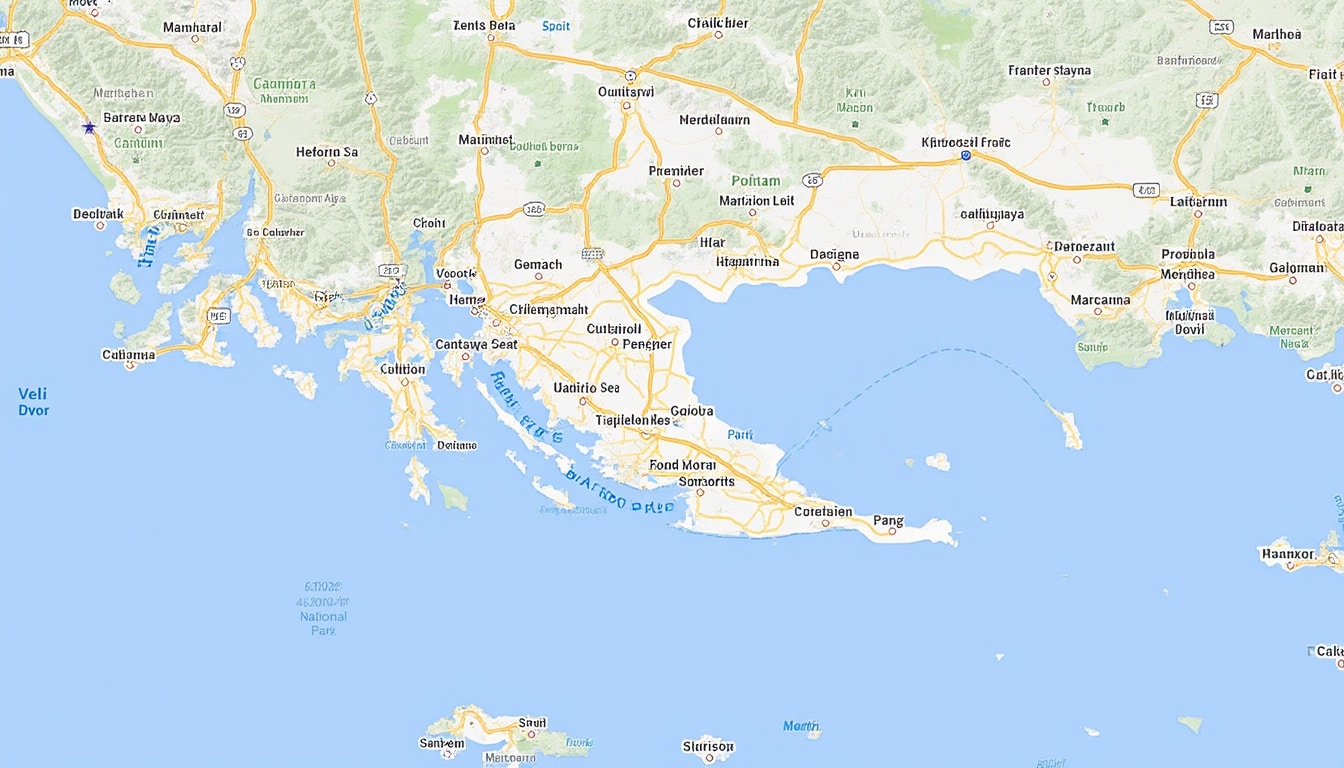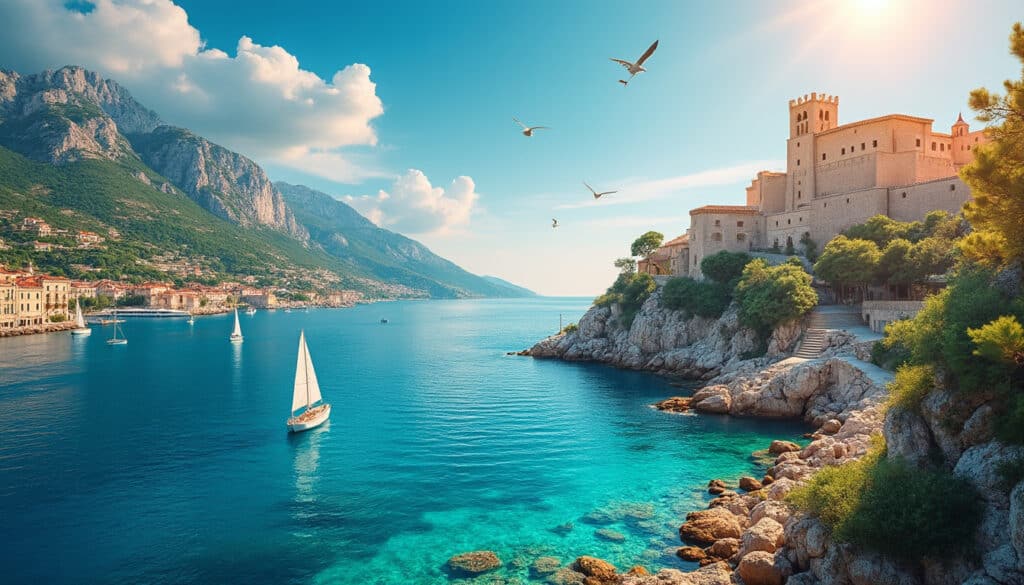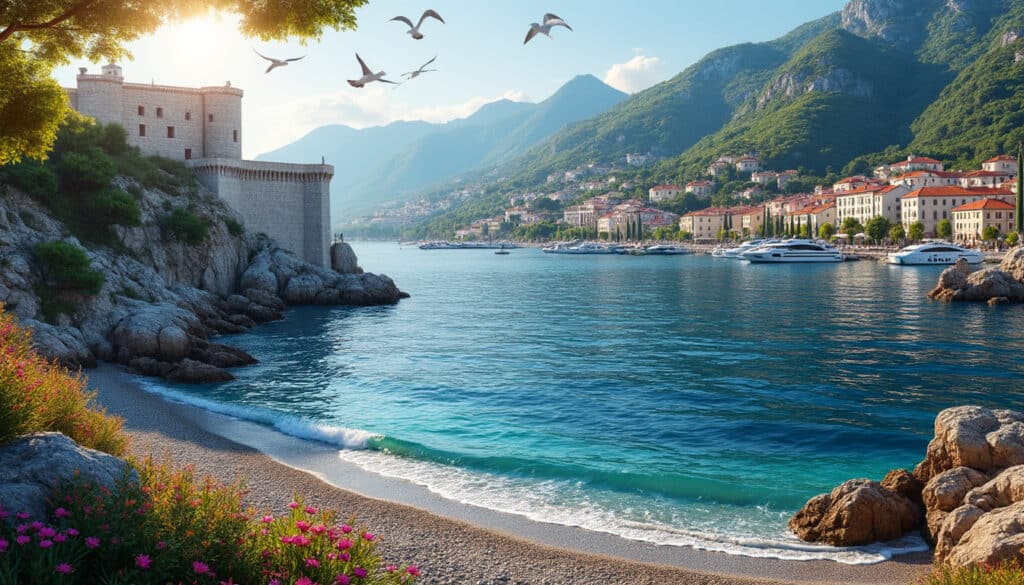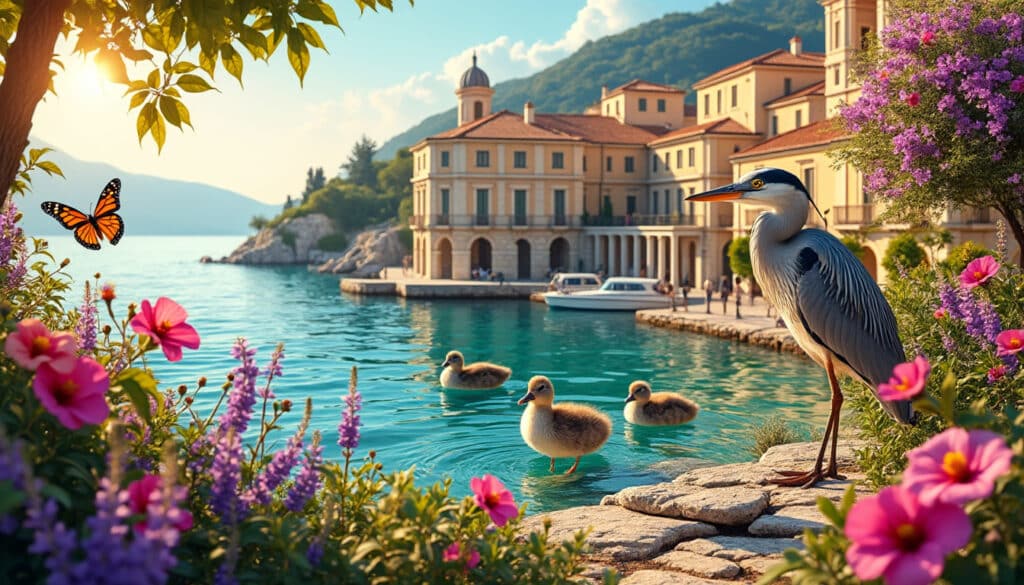Nestled along the vibrant Adriatic Coast, the city of Split, Croatia, is a fascinating blend of historical grandeur and natural beauty. Its strategic location has made it a crossroads of cultures for millennia, a legacy still visible in its classical architecture and bustling urban life. Located in the Split-Dalmatia region, Split’s coordinates, approximately 43.5089° N latitude and 16.4391° E longitude, place it perfectly on the map as a must-visit destination. Known for the iconic Diocletian’s Palace and the stunning Marjan Hill, Split offers picturesque views and a history steeped in Roman influence. As you explore its enchanting seascape, you’ll also encounter modern amenities and connectivity, marked by efficient transport networks such as the nearby Split Airport. This bustling city not only serves as a cultural beacon but also as a gateway to the many wonders Dalmatia has to offer. The Riva Promenade is a testament to its lively spirit, while fortresses like Klis offer a glimpse into its storied past.
Exploring the Coordinates of Split, Croatia
The geographical coordinates of Split, at 43.5089° N latitude and 16.4391° E longitude, are not merely numbers; they indicate a juncture where history meets the sea. This coastal city, located in the heart of Europe’s southern expanse, provides an insightful look at geographically strategic locations. These coordinates help indicate Split’s position far above the equator, nestled on the eastern shores of the Adriatic Sea. The historical importance of Split’s location is immense, with its long history acting as a significant Mediterranean gateway.
Split’s exact location in the Split-Dalmatia region is packed with numerous geographical features. Surrounded by mountains and waterways, it reveals how nature shapes the urban landscape. The precise GPS coordinates are crucial for navigation and tourism, offering visitors an easy way to find this pearl of the Adriatic. Understanding these coordinates provides a clear image of Split’s placement within Croatia and its proximity to other European landmarks.
- 📍 Latitude: 43.5089° N
- 📍 Longitude: 16.4391° E
- 📍 UTM Zone: 33T
- 📍 Timezone: Europe/Zagreb

Split is also precisely mapped through the UTM coordinate system, renowned for its accuracy in global positioning. The specifics, such as the UTM Northing at 4826911.4046563 and the UTM Easting at 858846.35128576, provide resourceful data points for detailed navigation and geographic studies. With the coordinates 43° 30’ 32.076” N and 16° 26’ 20.94” E, travelers can appreciate the city’s cartographical precision on modern maps, showcasing both historical and modern advancement in mapping technology.
The Importance of Coordinates in Tourism and Navigation
In today’s world, where global travel is at its peak, understanding the geographical identifiers of locations like Split becomes paramount. Coordinates are a universal language in tourism; they speak to scientists, adventurers, and casual tourists alike. These coordinates bridge the gap between the globe-trotters’ dream destinations and the physical terrain. For visitors coming to Split via land, air, or sea, these numbers ensure they reach the right place with precision.
Additionally, the exact positioning augments navigation tools, enabling seamless access for tourism operations and emergency services. The beauty of the city’s inviting vistas becomes a more personal experience through the lens of geological precision. A simple glance at Split’s coordinates enriches travelers’ knowledge and aligns perfectly with Split’s cultural depth, inviting exploration and engagement on multiple levels.
The Historical Significance of Split’s Location
Split’s strategic location has played a pivotal role throughout history, acting as a critical hub for ancient trade routes and a fortress city throughout the ages. The city developed around the Diocletian’s Palace, which remains one of the best-preserved Roman architectural achievements worldwide, serving as a UNESCO World Heritage site. This location ensured the city’s prominence and sustainability, fostering its growth from a Roman stronghold to a bustling modern city.
The city’s positioning along the Adriatic facilitated continuous interaction with numerous civilizations, from early Illyrian tribes to Middle Ages Venetian seafarers, each leaving their mark. This cultural melting pot can be experienced today in both architecture and Split’s vibrant cultural offerings. This exchange resulted in a fascinating mix of architecture, cuisine, art, and even traditions, blending the best of Eastern and Western Europe.
Explore Split’s cultural evolution and its historical scents and feels
- 🏛️ Built around Diocletian’s Palace
- 🏰 Influences include Roman, Venetian, and Ottoman
- 📜 UNESCO World Heritage Site status
- 🌍 Crossroads of ancient sea and land routes
Throughout the centuries, Split has expanded outward from the ancient palace into the heart of the Dalmatia region. With its captivating blend of historical scenes, Split offers an immersive experience for historians and everyday tourists alike, bringing ancient stories to life along cobblestone alleys lined with cafes and markets. These historical layers contribute significantly to its charm, making it a unique spot on the map of Croatia.
Modern Split: Vibrant City Life and Natural Beauty
Even as Split maintains its historical roots, it has transformed into a modern cosmopolitan city. The Riva Promenade represents Split’s lively social heart, where cafes and restaurants line a pedestrian walkway along the harbor’s edge. The juxtaposition of ancient stonework with bustling contemporary life showcases the harmonious blend of authenticity and modernity.
Its natural beauty is highlighted by Marjan Hill, a lush parkland providing panoramic views of the city and surrounding islands. Offering trails, picnic spots, and observation points, Marjan is a breath of fresh air right within the city’s proximity. This green escape is invaluable, especially given how it contrasts with the urban energy below.
Additionally, the nearby Klis Fortress offers not only stunning views but a window into ancient defense strategies, enriching the city’s historical tapestry. Such sights are a testament to Split’s diverse offerings and make it clear why it has become a hub for cultural and eco-tourism alike.
- 🍽️ Lively Riva Promenade for social gatherings
- 🌳 Marjan Hill for natural explorations
- 🏰 Klis Fortress for historical insights
- 🏖️ Beaches and islands dotting the coastline
Split’s modern infrastructure supports a growing international community, driven by its strategic geographic advantage and charming setting. With superb seafronts and an airport connecting Split to major European cities, the city positions itself as a dynamic blend of past and present. The city’s engaging combination of amenities ensures visitors have a lot more to experience than just the sea view.
Connectivity and Accessibility in Split
Accessibility greatly enhances Split’s appeal as a travel and living destination. The convenient location of Split Airport serves numerous international and domestic flights, connecting the city to various global spheres. This accessibility is crucial in maintaining Split’s status as a gateway to the beauties of the Dalmatia region and beyond.
Within the city, transportation is streamlined with options for public transit, taxis, and car rentals. This ease of transit enriches visitors’ experiences, providing seamless transitions from cityscapes to seascapes. Importantly, the city’s infrastructure development has embraced sustainable practices, ensuring the preservation of its breathtaking coastal areas.
- ✈️ Split Airport for global travel links
- 🚌 Efficient public transport systems
- 🚗 Car rentals for convenient mobility
- 🚢 Ferry connections to Blue Cave and islands
Given its vital geographic location, Split serves as a launching pad for further exploration of Croatia’s famed Adriatic coastline. Ferry connections link travelers to coastal treasures such as the Blue Cave or the quieter, quaint island towns. With its sights and accessibility, Split thrives as both a historic and contemporary hub for exploration and relaxation.
Community and Cultural Dynamics in Split
Split is not just a city of grandeur and architecture; it is a living community rich in cultural customs and social interactions. The blending of historical influence with modern living has forged a distinctive cultural identity. Festivals celebrating music and film draw international attention, enhancing the city’s cultural tapestry and showcasing an artistic flair synonymous with the Adriatic.
The city thrives on the warmth and hospitality of its locals, whose vibrant community spirit is felt throughout town squares and neighborhood gatherings. Events and cultural performances illuminate the way local traditions have been preserved and transformed over the years.
Understand the social dimensions affecting modern Split
Maintaining these cultural traditions while embracing diversity has become an integral part of Split’s ethos. Amid its cultural dynamism and local hospitality, Split offers visitors a profound insight into Croatia’s unique societal blend.
- 🎭 Numerous cultural events throughout the year
- 🎵 Local music festivals
- 🎥 Film and theater enunciating artistic legacy
- 👥 Community-focused social events
FAQ
🔍 What are the exact GPS coordinates for Split?
The GPS coordinates for Split are approximately 43.5089° N latitude and 16.4391° E longitude, vital for navigation and travel planning.
🔍 What is the best time to visit Split?
Summer, particularly from June to September, is ideal for experiencing Split’s vibrant festivals, warm weather, and crystal-clear waters.
🔍 How can tourists experience local culture in Split?
Attend local festivals, visit historical sites like Diocletian’s Palace, and interact with locals at cafes along the Riva Promenade.
🔍 What transport options are available in Split?
Travelers can utilize the efficient public transit system, taxis, rented cars, and international connections via Split Airport for easy mobility.
🔍 Are there historical day trips from Split?
Yes, day trips to Klis Fortress and Hvar island offer fascinating historical insights and scenic beauty.

With its intricate blend of lush landscapes, historical treasures, and picturesque beaches, Split is a captivating coastal city. Encompassing the spirit of Croatia’s Dalmatia region, Split draws tourists from around the world all year round. Amidst the backdrop of an…

Geographical features of Split
Split, a city nestled along the Adriatic Coast in Croatia, is a remarkable blend of natural beauty and historical allure. Known for its distinct geographic features, Split offers an ideal location that harmoniously balances the grandeur of ancient architecture with…

Split is more than a historical hub peppered with Roman relics; it’s a gateway to Croatia’s stunning natural wonders and rich wildlife. Travelers are drawn to Split not just for Dubrovnik’s white stones and ancient city walls, but for the…
Split, a picturesque city on Croatia’s Adriatic coast, serves as an idyllic haven for both its residents and visitors, offering an escape into a natural paradise. Home to several rivers, waterfalls, and water bodies, Split and its surrounding areas are…

